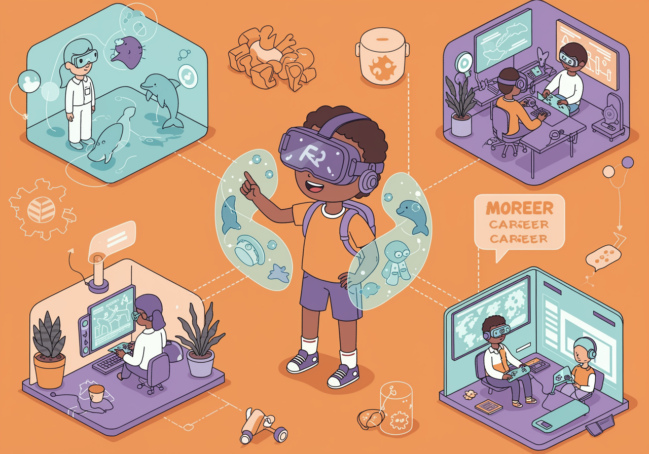Social and emotional learning (SEL) is an essential component of a well-rounded education. It equips students with the skills they need to navigate relationships, manage emotions, and make responsible decisions. By incorporating practical and exciting SEL activities into the classroom, educators can create a positive and supportive learning environment. In this article, we will explore the importance of SEL activities for the classroom and provide a range of activity ideas to help teachers incorporate SEL into their daily routines.
Understanding Social and Emotional Learning
Social and emotional learning is the process through which children and adults acquire and apply the knowledge, attitudes, and skills necessary to understand and manage emotions, set and achieve positive goals, feel and show empathy for others, establish and maintain positive relationships, and make responsible decisions.
Developing social and emotional skills is not only beneficial for individuals but also for society as a whole. Research has shown that individuals with strong social and emotional competencies are more likely to succeed in various aspects of life, including academics, career, and relationships. By fostering social and emotional learning, we are not only investing in the well-being of individuals but also in the creation of a more empathetic and understanding community.
The Importance of Social and Emotional Learning in the Classroom
Social and emotional learning fosters emotional intelligence, which is critical for students’ academic success and overall well-being. When students have a strong foundation in SEL, they are better able to manage stress, resolve conflicts, and develop healthy relationships. SEL also promotes positive classroom behavior, reduces instances of bullying, and improves academic performance.
Furthermore, integrating social and emotional learning in the classroom helps create a positive and inclusive learning environment. Students feel more connected to their peers and teachers, leading to increased engagement and motivation. By prioritizing SEL, educators can cultivate a classroom culture that values empathy, communication, and collaboration, preparing students not just for academic success but also for success in life.
Key Components of Social and Emotional Learning
Social and emotional learning consists of five key components: self-awareness, self-management, social awareness, relationship skills, and responsible decision-making. Each component plays a crucial role in developing students’ ability to understand and manage their emotions, establish positive relationships, and make appropriate decisions.
Self-awareness involves recognizing one’s emotions and understanding how they influence thoughts and behavior. Self-management focuses on regulating emotions, thoughts, and behaviors in different situations. Social awareness entails empathizing with others and understanding social cues, while relationship skills involve communicating effectively, resolving conflicts, and building positive connections. Responsible decision-making encompasses making ethical and constructive choices based on consideration of one’s well-being and that of others.
Implementing Social and Emotional Learning Activities
Setting Up the Classroom for Success
Create a safe and supportive classroom environment by establishing clear expectations and guidelines for behavior. Encourage open communication and promote a sense of belonging among students. Display visual reminders of SEL concepts and provide resources for students to explore emotions and feelings.
In addition to setting clear expectations, consider creating a designated “safe space” within the classroom where students can go to calm down or reflect. This area can be equipped with sensory tools like stress balls or fidget spinners to help students regulate their emotions. By providing a safe space, students will feel empowered to manage their feelings in a healthy way.
Integrating Activities into the Daily Routine
Embed SEL activities into everyday classroom practices. Start each day with a mindfulness or gratitude exercise to promote self-awareness and positive thinking. Incorporate cooperative learning activities that encourage teamwork and communication. Take advantage of teachable moments to discuss emotions and problem-solving techniques.
Furthermore, consider implementing a peer mentoring program where older students can support younger peers in developing their social and emotional skills. This not only fosters a sense of community within the classroom but also allows students to learn from one another in a meaningful way. By integrating peer mentoring into the daily routine, students can practice empathy, active listening, and leadership skills.
Practical Social and Emotional Learning Activities
Activity Ideas for Developing Self-Awareness
Engage students in reflection activities such as journaling or creating vision boards to help them explore their strengths, passions, and goals. Encouraging students to delve into their thoughts and feelings through journaling can provide them with a safe space to express themselves and gain insights into their own emotions. Vision boards, on the other hand, offer a creative way for students to visually represent their aspirations and desires, reinforcing their self-awareness and motivation.
Another effective method for developing self-awareness is through self-assessment exercises. By engaging students in activities that prompt them to evaluate their emotions and reactions in different situations, educators can help them better understand their triggers and responses, fostering emotional intelligence and self-regulation skills. These exercises can empower students to recognize patterns in their behavior and make conscious choices in their actions.
Activities to Foster Social Awareness
Organize class discussions or debates around social issues to foster empathy and broaden students’ perspectives. By facilitating open dialogues on topics such as diversity, inequality, and social justice, educators can encourage students to consider different viewpoints and develop a deeper understanding of societal challenges. Engaging in debates allows students to practice critical thinking and communication skills while learning to respect diverse opinions.
Furthermore, inviting guest speakers from diverse backgrounds to share their experiences can greatly contribute to fostering social awareness among students. Listening to personal stories and perspectives outside of their own lived experiences can help students cultivate empathy, compassion, and cultural sensitivity. Guest speakers provide valuable real-world insights that can challenge stereotypes, promote inclusivity, and inspire students to become agents of positive change in their communities.
Encouraging students to participate in community service projects is another impactful way to nurture social awareness and responsibility. By engaging in hands-on activities that address local needs and support marginalized populations, students can develop a sense of empathy, altruism, and civic engagement. Volunteering not only benefits the community but also allows students to witness the impact of their actions firsthand, fostering a sense of social responsibility and collective well-being.
Exciting Social and Emotional Learning Activities
Engaging Group Activities for Relationship Skills
Assign group projects that require collaboration and cooperation. Have students work together to solve problems and make decisions. Organize team-building activities that encourage trust and communication. Encourage peer mentorship programs to promote positive relationships among students.
Furthermore, consider implementing a buddy system where students are paired up to support each other academically and emotionally. This can help foster empathy and understanding among peers, creating a supportive network within the classroom. Additionally, organizing group discussions on relevant social issues can encourage students to listen to diverse perspectives and practice respectful communication.
Fun Activities to Enhance Responsible Decision-Making
Design interactive games that challenge students to make moral and ethical choices. Role-play decision-making scenarios to help students practice analyzing consequences and making responsible choices. Incorporate real-life case studies or simulations to engage students in critical thinking about decision-making.
Moreover, consider inviting guest speakers who have experience in making difficult decisions to share their insights with the students. This can provide real-world examples and inspire students to think critically about the decision-making process. Creating a decision-making journal where students reflect on their choices and the outcomes can also help them develop a deeper understanding of responsible decision-making.
Evaluating the Impact of Social and Emotional Learning Activities
Assessing Student Progress and Engagement
Monitor students’ progress in SEL skills through observation, self-assessment, and peer feedback. Use rubrics or checklists to evaluate their participation and growth. Collect data on behavior incidents and academic performance to assess the impact of SEL activities on students’ overall well-being.
Observation is a key component of assessing student progress in social and emotional learning (SEL) activities. By actively watching how students interact with one another, handle conflicts, and regulate their emotions, educators can gain valuable insights into the effectiveness of the SEL curriculum. Self-assessment tools, such as journals or reflection worksheets, provide students with the opportunity to reflect on their own growth and areas for improvement in SEL skills. Additionally, peer feedback encourages students to support and learn from each other, fostering a collaborative and empathetic classroom environment.
Adjusting Activities for Continuous Improvement
Continuously reflect on the effectiveness of SEL activities and make adjustments as needed. Seek input from students and colleagues to gather feedback on what is working and what can be improved. Stay updated on research and best practices in SEL to enhance the impact of activities on student learning outcomes.
Engaging in regular self-assessment and seeking feedback from students and colleagues are essential practices for educators looking to continuously improve their SEL activities. By creating a culture of open communication and receptiveness to feedback, educators can tailor their lessons to better meet the diverse needs of their students. Staying informed about the latest research and best practices in SEL ensures that educators are equipped with the most effective strategies for promoting students’ social and emotional development.
By implementing practical and exciting social and emotional learning activities in the classroom, educators can cultivate an environment where students feel supported, connected, and equipped with the skills they need to thrive academically and socially. These activities not only enhance students’ emotional intelligence but also contribute to a positive and inclusive classroom culture. Embrace the power of SEL and make a lasting impact on your students’ lives.
You might be interested:



